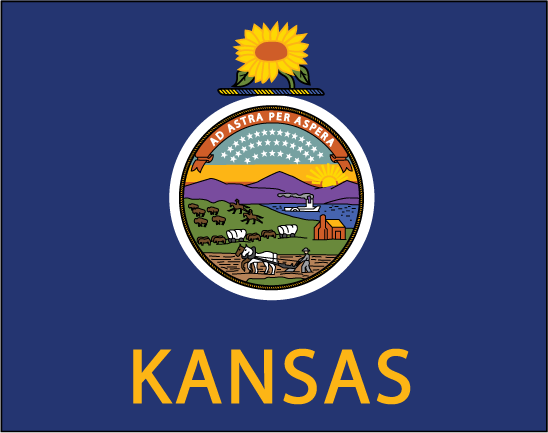The trade union movement was at a low ebb at the beginning of the twentieth century. The American Federation of Labor became active in Kansas in 1907 but, since it operated largely on a craft basis, the masses of unskilled workers were left unorganized. Kansas labor, through the Western Federation of Miners, was also represented in the Industrial Workers of the World, which was organized in 1905 as a protest against the slow progress of the conservative trade unions.
The post-War unrest of industrial workers affected all of Kansas in the autumn of 1919 when the United Mine Workers in the "little Balkans" joined the Nation-wide strike for increased wages and a six-hour day. As the strike lengthened, the weather became very cold and a shortage of fuel seemed imminent. Governor Henry J. Allen threw the mines into a temporary State receivership. About a thousand workers, many of them college students, were hired to mine the Crawford County "strippers" under the protection of National guardsmen.
Governor Allen called a special legislative session at which a criminal syndicalism and sabotage act was passed, and the Court of Industrial Relations was established. The court consisted of three judges, appointed by the Governor, who were empowered to investigate, try, and decide disputes involving "essential industries." The court regulations were presumably intended to safeguard public welfare through the compulsory removal of all obstructions to production. Labor was to be permanently appeased by its right to appeal against low wages, long hours, and discriminatory practices of employers. Industry was to be benefited by Section 15, which forbade picketing and boycotting, and by Section 17, which deprived labor of the right to strike. Violators of Section 17 were to be penalized by a jail sentence of from one to two years and/or fines that ranged from one to five thousand dollars.
Organized labor saw in the Kansas Court of Industrial Relations a. crystallization of undemocratic forces. Samuel Gompers, president of the American Federation of Labor, sounded the tocsin with "Kansas cannot legislate men into serfdom. Kansas cannot put upon her statute books a law that will compel men to submit to involuntary servitude." Governor Allen defended the court on all fronts. More than 40,000 persons were turned away, when he and Samuel Gompers debated the issue in Carnegie Hall, New York City, on May 28, 1920.
Since the Court of Industrial Relations was the first and only attempt to enforce compulsory arbitration of labor disputes, its operations were closely followed by the Nation's economists, union leaders, and industrialists. What was publicized as the first case of its kind in America occurred in November 1920 when seven Topeka mill operators were cited to appear before the court and "show cause why men are being laid off. . . and production curtailed without permission of the court." In the previous year the Topeka mill workers had struck for higher pay and lost, their jobs being assumed by non-union men. The case against the mill operators aroused great interest, since many believed that a precedent for industrial stabilization might be established.

